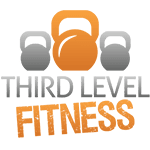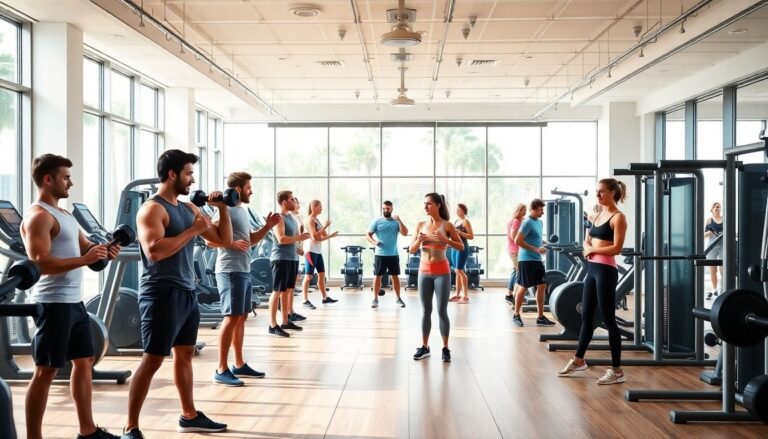Figuring out where to start with fitness can feel like a lot. There are so many different ways to work out, and everyone’s goals are different. Whether you want to lose some weight, build muscle, or just feel better overall, having a solid plan makes a big difference. This guide is here to help you sort through all the options and build your own effective workout plans & routines, step-by-step. We’ll cover everything from figuring out what you want to achieve to sticking with it long-term.
Key Takeaways
- Start by clearly defining your fitness goals and honestly assessing your current fitness level, available time, and any equipment you have access to.
- Choose exercises that directly support your goals, whether that’s weight loss, muscle gain, or general fitness, and consider incorporating compound movements for efficiency.
- Structure your routines by determining appropriate sets, reps, rest periods, and workout duration, and explore techniques like supersets and circuits to increase intensity.
- Plan your weekly schedule by deciding on training frequency, balancing workout intensity with adequate recovery, and making sure to include rest days.
- Keep track of your progress with a workout journal, measure improvements over time, and celebrate your achievements to stay motivated and adjust your plans as needed.
Understanding Your Fitness Starting Point
Getting started with fitness can feel like a big step, and honestly, it is! But it doesn’t have to be complicated. The first thing you need to do is figure out where you’re at right now. This isn’t about judgment; it’s about getting a clear picture so you can make a plan that actually works for you. Think of it like checking the map before you start a road trip – you need to know your starting location to plot the best route.
Defining Your Personal Fitness Goals
So, what do you actually want to achieve? Are you looking to shed some pounds, build some muscle, feel more energetic, or maybe just be able to keep up with your kids without getting winded? Be specific! Instead of saying ‘get fit,’ try ‘lose 10 pounds’ or ‘be able to do 10 push-ups.’ Having clear goals gives you something concrete to aim for. It’s also helpful to think about why you want to achieve these goals. What’s the motivation behind it all? Knowing your ‘why’ can be a huge help when things get tough.
Assessing Your Current Fitness Level
Before you jump into intense workouts, it’s smart to get a baseline of your current fitness. This helps you set realistic goals and track your progress. You don’t need fancy equipment for this. Simple tests can give you a good idea of your cardiovascular health, strength, and flexibility. For example, you could time yourself walking or running a mile, see how many push-ups you can do, or check your flexibility by seeing how far you can reach. This initial assessment is a great way to see how far you’ve come later on. You can find some simple ways to assess your current fitness level that are perfect for beginners.
Identifying Your Available Time and Equipment
Let’s be real: life gets busy. You need to figure out how much time you can realistically commit to working out each week. Are we talking 20 minutes a few times a week, or do you have longer blocks available? Also, consider what equipment you have access to. Do you have a gym membership, or will you be working out at home with just your body weight or some basic gear? Knowing these details helps tailor your plan so it fits into your life, not the other way around. It’s better to have a shorter, consistent routine than an ambitious one you can’t stick to.
Don’t get discouraged if your starting point isn’t where you want it to be. Everyone starts somewhere, and the most important step is the one you take today.
Building Your Foundational Workout Plans
Alright, so you’ve figured out your goals and where you’re starting from. Now comes the fun part: actually picking the exercises! It can feel a bit overwhelming with so many options out there, but we’re going to keep it simple and effective. The key is to choose movements that work multiple muscles at once. These are called compound movements, and they’re like the superheroes of the workout world because they give you more bang for your buck.
Choosing Exercises for Weight Loss
If shedding pounds is your main goal, you’ll want to focus on exercises that burn a good amount of calories. Think full-body movements that get your heart rate up. Combining these with a smart nutrition plan is where the magic happens. Remember, consistency is more important than doing the most intense workout every single time.
- Cardio-focused compound movements: Squats, lunges, and burpees are great examples.
- High-intensity intervals: Short bursts of intense activity followed by brief rest periods can really boost calorie burn.
- Strength training: Building muscle actually helps your body burn more calories even when you’re resting.
Selecting Exercises for Muscle Gain
For those looking to build muscle, the focus shifts slightly. You’ll still want to incorporate compound movements, but you’ll also pay close attention to progressive overload – meaning you gradually increase the weight, reps, or sets over time. This is what signals your muscles to grow.
- Primary compound lifts: Squats, deadlifts, bench presses, overhead presses, and rows are fantastic for overall muscle development.
- Accessory exercises: Once you’ve got your compound lifts down, you can add exercises that target specific muscle groups, like bicep curls or triceps extensions.
- Proper form: This is super important to prevent injury and make sure you’re actually working the intended muscles. Don’t be afraid to start with lighter weights to nail the technique.
Incorporating Compound Movements
Compound movements are your best friend, whether you’re trying to lose weight or gain muscle. They work several muscle groups simultaneously, making your workouts more efficient and effective. Instead of doing a separate exercise for your biceps, then your back, a pull-up works both! It’s all about smart training.
Here’s a basic template for a full-body workout using compound movements:
| Muscle Group Targeted | Exercise Example (Choose One) |
|---|---|
| Quads (Front of Legs) | Barbell Squats, Goblet Squats |
| Glutes/Hamstrings (Back of Legs) | Deadlifts, Romanian Deadlifts |
| Push (Chest, Shoulders, Triceps) | Push-ups, Bench Press, Overhead Press |
| Pull (Back, Biceps) | Pull-ups, Rows |
The goal isn’t to do a million different exercises. It’s to pick a few key movements and get really good at them. Focus on getting stronger in these basic lifts, and you’ll build a solid foundation for whatever your fitness goals are. You can always add more variety later on, but start with the basics. For a great starting point with bodyweight exercises, check out this beginner-friendly bodyweight workout.
The best workout is the one you’ll actually stick with. So pick exercises you enjoy (or at least don’t dread!) and focus on making progress, no matter how small.
Structuring Effective Workout Routines
Alright, so you’ve got your goals and you know your starting point. Now comes the fun part: actually putting together a workout that works for you. It can feel a bit overwhelming with all the options out there, but honestly, the best routine is the one you’ll actually stick with. We’re going to keep this pretty straightforward.
Determining Sets, Reps, and Rest Periods
This is where you get into the nitty-gritty of each exercise. Think of sets as a group of repetitions. So, if you do 10 push-ups, that’s one set of 10 reps. For most people starting out, aiming for 2 to 5 sets per exercise is a good range. As for reps (repetitions), try to hit between 5 and 15 reps for each set. If you’re unsure, 10 reps is a solid middle ground. Between each set, give yourself about 1 to 2 minutes to recover. You can totally adjust this as you go – if you feel ready to go sooner, great! If you need a bit more time, that’s fine too.
Understanding Workout Duration
How long should you actually be in the gym or working out at home? While there’s no single magic number, most people find that keeping workouts to under an hour is pretty effective. This helps you stay focused and avoids burnout. It’s better to have a consistent, shorter workout than an overly long one you dread.
The Power of Supersets and Circuits
Want to make your workouts more efficient and get your heart pumping a bit more? Consider supersets or circuits. A superset involves doing two different exercises back-to-back with minimal rest in between. A circuit is a series of exercises done one after another, with a short rest only after completing the entire circuit. These methods can really boost your calorie burn and make your training more dynamic. It’s a great way to add some variety and challenge yourself, especially if you’re looking to improve your fitness.
Remember, consistency is key. It’s better to do a slightly less intense workout consistently than to aim for perfection and skip workouts altogether. Listen to your body and adjust as needed.
Optimizing Your Weekly Workout Schedule
Figuring out how often to hit the gym or your home workout space is a big part of making fitness stick. You don’t need to be training every single day, and honestly, trying to do so can lead to burnout pretty fast. It’s way more effective to build solid habits and aim for consistency over intensity, especially when you’re starting out. Think about it: your muscles actually get broken down during your workouts, and then they rebuild themselves stronger while you’re resting. Giving them about 48 hours to recover between sessions, particularly if you’re lifting heavier, is key to staying injury-free and getting stronger.
Frequency of Training Sessions
For many people, a schedule of 2-3 full-body workouts per week is a great starting point. This could look like Monday, Wednesday, and Friday, or Tuesday, Thursday, and Saturday. The most important thing is to find a rhythm that works with your life. If your schedule is a bit unpredictable, don’t sweat it. Just do the work when you can and pay attention to how your body feels. If you’re still feeling super sore or fatigued when your next workout is supposed to happen, it might be a sign you need a bit more rest time between sessions. Remember, consistency beats perfection every time.
Balancing Intensity and Recovery
Recovery isn’t just about rest days; it’s also about how you manage your energy during the week. If you find yourself wanting to be active on your
Enhancing Your Workout Experience
Making your workouts more effective and enjoyable is all about the little things you do before, during, and after. It’s not just about lifting weights or running miles; it’s about setting yourself up for success and making sure your body is ready for the challenge and recovers well afterward. Think of it like preparing for a big project – you wouldn’t just jump in without a plan, right? Your workouts deserve the same thoughtful approach.
The Role of Warm-ups and Cool-downs
Getting your body ready before you start is super important. A good warm-up gets your blood flowing and your muscles prepared, which can help prevent injuries. It doesn’t have to be complicated. Start with about 5-10 minutes of light cardio, like a brisk walk, some jumping jacks, or even just pedaling on a stationary bike. After that, you can do some dynamic stretches – think movements like leg swings or arm circles. This gets your joints moving through their range of motion.
On the flip side, cooling down after your workout is just as vital. This is where you help your body gradually return to its resting state. Similar to the warm-up, spend about 5-10 minutes doing some light cardio. Then, it’s time for static stretches. Hold each stretch for about 15-30 seconds, focusing on the muscles you just worked. You should feel a gentle pull, not pain. This helps improve flexibility and can reduce that post-workout soreness.
Exploring Cross-Training Options
Sticking to the same routine day in and day out can get boring, and your body might even get too used to it, slowing down progress. That’s where cross-training comes in. It means mixing up your workouts with different types of activities. If you usually lift weights, try adding some swimming, cycling, or even a dance class. This works different muscle groups, improves your overall fitness, and can keep things fresh and exciting. It’s a great way to challenge your body in new ways and prevent overuse injuries.
Leveraging Fitness Apps and Trackers
In today’s world, there are tons of apps and gadgets that can really help you out. You can use them to track your workouts, monitor your progress, and even find new routines. Some apps let you log your sets, reps, and weights, while others can track your heart rate or the distance you’ve run. Seeing your progress laid out can be a huge motivator. Plus, many apps offer guided workouts or challenges that can push you to try something new. Finding a tool that fits your style can make a big difference in staying consistent.
Here’s a quick look at what you might track:
- Weight lifted: Are you getting stronger?
- Reps completed: Can you do more repetitions with the same weight?
- Workout duration: How long did it take to complete your routine?
- Personal bests: Did you beat a previous record?
Keeping a record of your workouts is like keeping a diary of your fitness journey. It shows you where you’ve been and how far you’ve come. Don’t get discouraged if you don’t see huge changes overnight. Consistency is key, and tracking helps you see those small wins that add up over time.
Tracking Progress and Staying Motivated
It’s easy to get caught up in the day-to-day grind of workouts, but pausing to check how far you’ve come is super important. Seeing your progress is a huge motivator. Without it, you might start to wonder if all the effort is even worth it. So, how do you keep tabs on your fitness journey and keep that fire lit?
Keeping a Detailed Workout Journal
Think of your workout journal as your personal fitness diary. It’s not just about jotting down exercises; it’s about recording the details that show your growth. What should you be tracking? Well, for starters:
- Date: Always note the date of your workout.
- Exercises: List the specific exercises you did.
- Sets and Reps: Record how many sets and repetitions you completed for each exercise.
- Weight Used: If you’re lifting weights, note the amount.
- How You Felt: A quick note on your energy levels or any challenges can be insightful.
This level of detail helps you see patterns and understand what’s working. You can use a simple notebook, a spreadsheet, or even one of the many fitness apps available today to explore the best fitness apps for 2025. The key is consistency. You want to be able to look back and see, for example, that you’re lifting more weight or doing more reps than you were a month ago.
The most effective way to track progress is to make it a habit. Schedule a few minutes after each workout to log your session. This small commitment can make a big difference in staying on track and seeing tangible results over time.
Measuring Improvements Over Time
Once you’ve got your journal going, you can start looking for trends. Are you getting stronger? Faster? Can you do more push-ups than last week? These are all signs you’re moving forward. For instance, if you’re aiming for muscle gain, you’ll want to see that you can lift heavier weights or complete more reps with the same weight. If weight loss is your goal, you might notice your endurance improving, allowing you to work out longer or at a higher intensity.
Here’s a simple way to visualize your progress:
| Metric | Last Week | This Week | Improvement |
|---|---|---|---|
| Bench Press (lbs) | 100 | 110 | +10 lbs |
| Squats (reps) | 10 | 12 | +2 reps |
| Plank (seconds) | 45 | 60 | +15 sec |
Seeing these numbers tick up is incredibly rewarding. It shows that your hard work is paying off and gives you the confidence to keep pushing.
Celebrating Milestones and Adjusting Plans
Don’t forget to celebrate your wins, big or small! Hit a new personal best? Finished a tough workout without stopping? Acknowledge it! Maybe treat yourself to a nice meal (within reason, of course) or just take a moment to feel proud. These celebrations help reinforce the positive habits you’re building. It’s also important to be flexible. If you hit a plateau or find that your current routine isn’t working as well as you’d hoped, don’t be afraid to adjust your plan. Maybe you need to change up your exercises, alter your sets and reps, or even take an extra rest day. Listening to your body and adapting your strategy is part of the process. Your fitness journey is a marathon, not a sprint, and staying motivated means being smart about how you train and how you acknowledge your achievements.
Keep Going and Enjoy the Ride!
So, there you have it! Building your own fitness routine might seem like a lot at first, but remember, it’s your journey. Start simple, figure out what works for you, and don’t be afraid to adjust as you go. Whether you’re aiming to lose weight, build muscle, or just feel better overall, having a plan makes a huge difference. Keep track of your progress, celebrate the small wins, and most importantly, find activities you actually enjoy. Consistency is key, and with a little effort and planning, you’ll be well on your way to crushing your fitness goals. You’ve got this!
Frequently Asked Questions
Why is having a workout plan so important?
A workout plan is like a map for your fitness journey. It helps you know what exercises to do, how often, and for how long. This makes sure you’re working towards your specific goals, like losing weight or getting stronger, and prevents you from just guessing in the gym. It keeps you focused and helps you see progress.
How do I figure out what exercises are best for me?
Think about what you want to achieve. If you want to lose weight, you might focus on cardio and full-body movements. If you want to build muscle, you’ll want to do exercises that target specific muscle groups. It’s also smart to pick exercises you actually enjoy, so you’re more likely to stick with them.
What’s the right amount of sets and reps?
For most exercises, doing 2 to 5 sets with 5 to 15 repetitions (reps) per set is a good starting point. If you’re new, start with fewer sets and reps. The goal is to challenge yourself by the last few reps of each set, but not so much that your form breaks down.
How long should I rest between sets?
A good rule of thumb is to rest for about 1 to 2 minutes between sets. This gives your muscles enough time to recover so you can perform well on the next set. You can adjust this time based on how you feel and the intensity of your workout.
How often should I work out each week?
For most people, working out 3 to 5 days a week is a great balance. It gives your body enough time to work hard and also to rest and repair itself. Listen to your body; if you feel tired or sore, it’s okay to take an extra rest day.
What are warm-ups and cool-downs, and why do I need them?
A warm-up is a short routine before your main workout, like light cardio or dynamic stretches, to get your blood flowing and muscles ready. A cool-down is done after your workout, often with stretching, to help your body relax and recover. Both help prevent injuries and make your workouts more effective.




